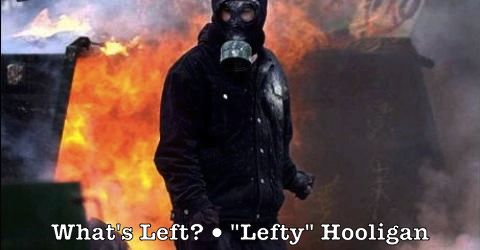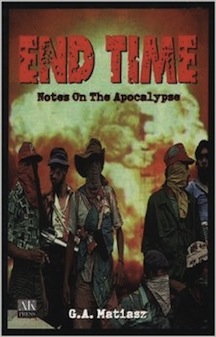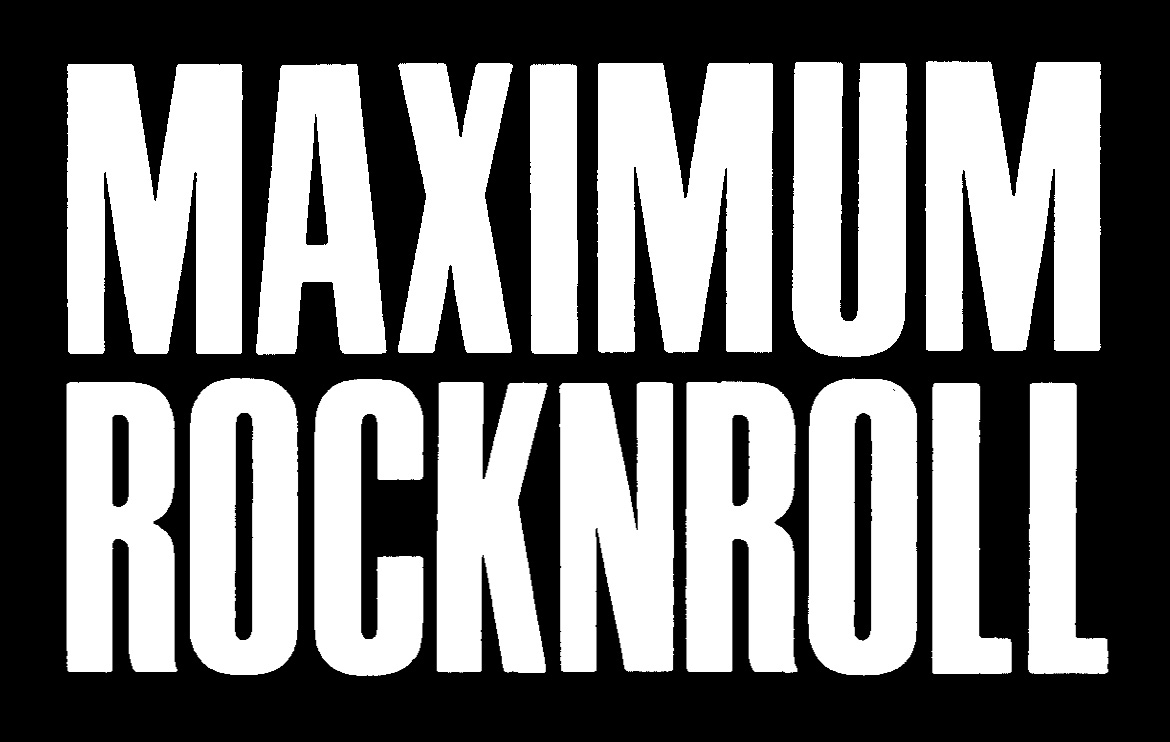 It pisses me off.
It pisses me off.
In 2015 Breitbart ran a story by Lisa De Pasquale entitled “Political Punks” that détourned the famous 1976 Ramones record cover by superimposing the heads of rightwingers Greg Gutfeld, Clint Eastwood, Ann Coulter and Gavin McInnes over the four original band members.
Blasphemy!
 Joining in on the “conservatism is the new punk rock” tip, Nick Gillespie praised and requoted De Pesquale’s original sentiment in “Let Us Now Praise Political Punks!” (Reason) that:
Joining in on the “conservatism is the new punk rock” tip, Nick Gillespie praised and requoted De Pesquale’s original sentiment in “Let Us Now Praise Political Punks!” (Reason) that:
[P]op culture is inherently anarchic, fun, and beyond the control of P.C. masters of the left and the right: ‘There is a group of conservatives and libertarians – I call them political punks – who actually have cultural credibility. They appreciate mainstream culture for the power of the parable in furthering a message of liberty. They also understand that unlike the perpetually outraged on both sides, Americans don’t view everything through politics. They are anti-authoritarian. They are punk. They go against the liberal culture scene and the conservative political scene. These punks are our best hope for engaging new audiences on the importance of liberty.’
Bullshit!
 One of these days I’ll definitively put to rest the myth underlying this quote that the youth rebellions of the 1960s lost politically but won culturally. In other words, that the 60s lost the war but won the peace. That misdirection, as well as the notion that conservatism is the new punk rock, are like proclaiming the Hitlerjugend a rebellious youth movement while denouncing the Swingjugend as establishment fascists.
One of these days I’ll definitively put to rest the myth underlying this quote that the youth rebellions of the 1960s lost politically but won culturally. In other words, that the 60s lost the war but won the peace. That misdirection, as well as the notion that conservatism is the new punk rock, are like proclaiming the Hitlerjugend a rebellious youth movement while denouncing the Swingjugend as establishment fascists.
The tendency for Republicans, conservatives and rightwing libertarians to claim they’re one thing when they’re the opposite is nothing new. F.H. Buckley wrote in The Republican Workers Party in 2018 that Trump’s GOP is the future of American politics—socially conservative, multi-ethnic, working-class based, economically middle-of-the-road, eschewing laissez-faire for America First protectionism. Buckley’s polemic was anticipated by Graham’s “A Trumpist Workers’ Party Manifesto” (The Atlantic) and Calmes’s “They Want Trump to Make the G.O.P. A Workers’ Party” (NYT) that emphasized the same points, dismissing Matt Taibbi’s liberal panic in his Rolling Stone article “A Republican Workers’ Party?”
“Basically, large numbers of working-class voters, particularly white working-class voters, long ago abandoned the Democratic Party in favor of the Republicans,” according to Taibbi. “The new Republicans would no longer be the party of ‘business and the privileged,’ but the protector of a disenfranchised working class.” He places the blame for this on the magical thinking of Reagan’s sleight-of-hand “trickle-down economics,” Clinton’s free-trade agreements, and the combined Republican/Democratic evisceration of the American middle class in the name of globalization. “Like Marxism, globalization is a borderless utopian religion. Its adherents almost by definition have to reject advocacy for the citizens of one country over another. Just as ‘Socialism in One Country’ was an anathema to classic Marxists, ‘prosperity in one country’ is an anathema to globalists, no matter what their politicians might say during election seasons.”
 Polls and statistics don’t bear out the new GOP workers’ party theory. Republican support for free trade has actually increased. And while Republicans are not fans of immigration, they haven’t gone nativist either. Biden won by appealing to the middle and to independent voters. The middle-class and the suburbs, by and large, abandoned Trump this time around. Economically successful localities were not impressed by Trump’s protectionist measures, nor for that matter were localities struggling economically which suffered from Trump’s trade wars, and all these districts were ultimately dominated by Biden. Even simple demographic shifts have been trending Democratic over Republican across the country.
Polls and statistics don’t bear out the new GOP workers’ party theory. Republican support for free trade has actually increased. And while Republicans are not fans of immigration, they haven’t gone nativist either. Biden won by appealing to the middle and to independent voters. The middle-class and the suburbs, by and large, abandoned Trump this time around. Economically successful localities were not impressed by Trump’s protectionist measures, nor for that matter were localities struggling economically which suffered from Trump’s trade wars, and all these districts were ultimately dominated by Biden. Even simple demographic shifts have been trending Democratic over Republican across the country.
In 2016, Brownstein (The Atlantic) declared that “the billionaire developer is building a blue-collar foundation,” while Zitner and Chinni (WSJ) wondered about “Trump’s success in attracting white, working-class voters” for his general election strategy and Flegenheimer and Barbaro (NYT) proclaimed that Trump’s victory was “a decisive demonstration of power by a largely overlooked coalition of mostly blue-collar white and working-class voters.” But Nicholas Carnes and Noam Lupu (WaPo) disputed this through polling analysis: “Trump supporters were mostly affluent Republicans. […] [O]nly a third of Trump supporters had household incomes at or below the national median of about $50,000. Another third made $50,000 to $100,000, and another third made $100,000 or more and that was true even when we limited the analysis to only non-Hispanic whites. If being working class means being in the bottom half of the income distribution, the vast majority of Trump supporters during the primaries were not working class.”
According to Jonah Goldberg: “Trump received 12 percent of the black vote, 32 percent of the Latino vote and 34 percent of the Asian American vote. In 2004, George W. Bush received 11 percent of the black vote and 44 percent of both the Latino and Asian American votes. An increase of 1 percent among black voters and a double-digit decrease among Latino and Asian voters isn’t exactly a seismic event. [I]t’s worth noting that the average showing among union households […] for GOP presidential candidates since 2000 is about 41 percent. Trump got 40 percent in 2020, down 7 points from 2016.”
 The Trump GOP workers’ party is a myth. But so is the idea that the Democratic party represents the American working class. The conversion of the Democrats from a white supremacist party of unreconstructed southerners to a national party favoring big government, civil rights and a loose coalition of single-interest groups under Franklin Delano Roosevelt is too detailed a subject for this column. Suffice it to say that the Democratic party continues to house Yellow Dog Democrats alongside social liberals and progressives in an uneasy corporatist alliance. Even at the height of FDR’s New Deal and the Kennedy/Johnson Great Society, its welfare state Keynesianism was a pale reflection of European social democratic workers’ parties with their programs of political democracy, mixed economies, state intervention and moderate nationalization.
The Trump GOP workers’ party is a myth. But so is the idea that the Democratic party represents the American working class. The conversion of the Democrats from a white supremacist party of unreconstructed southerners to a national party favoring big government, civil rights and a loose coalition of single-interest groups under Franklin Delano Roosevelt is too detailed a subject for this column. Suffice it to say that the Democratic party continues to house Yellow Dog Democrats alongside social liberals and progressives in an uneasy corporatist alliance. Even at the height of FDR’s New Deal and the Kennedy/Johnson Great Society, its welfare state Keynesianism was a pale reflection of European social democratic workers’ parties with their programs of political democracy, mixed economies, state intervention and moderate nationalization.
But the decline of Marxism and the general, worldwide shift toward populism and the right means that current social democracy would be happy to settle for welfare state Keynesianism. These political changes notwithstanding, the project to build a genuine labor party in the American context is fraught from the start. That’s because there are basic differences between European parliamentary democracy and American two-party democracy. America’s 50%+1 winner-take-all electoral system virtually ensures that only two political parties dominate the political process by favoring the middle-of-the-road, thus marginalizing all other electoral contenders. Third parties like the Green Party or Libertarian Party exist, but they have little to no chance of influencing politics let alone gaining power. In turn, Europe’s parliamentary representation of minority parties has everything to do with proportional voting and recognition. And while rule by broad coalitions, left or right, tends to recreate a kind of two-party system within European democracies, there remain extant minority parties in Western parliaments—everything from monarchist and fascist to communist and green, even pagan and anarchist—with electoral options for political power.
This electoral analysis, in emphasizing American capitalist democracy’s default toward the political middle, reinforces why the theory of a Trump GOP workers’ party is crap. Is there potential for creating a viable American labor party or, barring that, transforming the Democratic party into one despite these electoral realities? Certainly everyone from Michael Moore to Gloria LaRiva spout nonstop inanities of doing just that when they’re not arguing endlessly with each other over the details. But exactly what type of workers’ party is desired?
 First, start with the “hotly debated” difference drawn by Bernie Sanders and the Democratic Socialists of America between democratic socialism and social democracy. To me, it’s a difference without a distinction, but the notion of taking over the Democratic party and moving it to the Left is tempting for many social liberals and progressives within the party. So is the idea of a democratically organized, electorally based, independent workers’ party. Then there’s the Leninist vanguard party in the name of the working class, whether electorally oriented or classically revolutionary. My tradition of left communism has its own version of the workers’ party, an interventionist party as “hard as steel, clear as glass.” Finally, there are recurring calls on the Left for a “party of a new type,” labor or otherwise.
First, start with the “hotly debated” difference drawn by Bernie Sanders and the Democratic Socialists of America between democratic socialism and social democracy. To me, it’s a difference without a distinction, but the notion of taking over the Democratic party and moving it to the Left is tempting for many social liberals and progressives within the party. So is the idea of a democratically organized, electorally based, independent workers’ party. Then there’s the Leninist vanguard party in the name of the working class, whether electorally oriented or classically revolutionary. My tradition of left communism has its own version of the workers’ party, an interventionist party as “hard as steel, clear as glass.” Finally, there are recurring calls on the Left for a “party of a new type,” labor or otherwise.
Rather than discuss these various labor party options and their potential under the dubious rubric of the “new socialist movement,” I’d like to emphasize the need for extra-electoral alternatives. Not actually as oppositional or replacement strategies to any workers’ party, but as a parallel course of action. Even as an anarchist, I never endorsed the knee-jerk reaction that “if voting could change things, it would be illegal.” I’ve always voted, but I don’t otherwise participate in electoral politics. I prefer supporting and participating in social movements—first and foremost organized labor and wildcat workers movements—to any socialist labor party in achieving socialism. The great historical social revolutions were never lead by a single workers’ party but rather were mass uprisings of numerous social movements alongside contending political parties. That’s the only real basis for a true socialism from below.
SOURCES:
(listed by date)
“The Democratic Party: How Did It Get Here?” by Ted Van Dyk (The Atlantic, 12-4-2013)
“Political Punks” by Lisa De Pasquale (Breitbart, 2/9/2015)
“Let Us Now Praise Political Punks!” by Nick Gillespie (Reason, 2/10/2015)
“The Billionaire Candidate and His Blue-Collar Following” by Ronald Brownstein and National Journal (The Atlantic, 9-11-2015)
“Rust Belt Could Be Donald Trump’s Best Route to White House” by Aaron Zitner and Dante Chinni (The Wall Street Journal, 3-6-2016)
“A Trumpist Workers’ Party Manifesto” by David Graham (The Atlantic, 5-26-2016)
“They Want Trump to Make the G.O.P. A Workers’ Party” by Jackie Calmes (New York Times, 8-5-2016)
“A Republican Workers’ Party?” by Matt Taibbi (Rolling Stone, 8-6-2016)
“Donald Trump Is Elected President in Stunning Repudiation of the Establishment” by Matt Flegenheimer and Michael Barbaro (New York Times, 11-9-2016)
“It’s time to bust the myth: Most Trump voters were not working class” by Nicholas Carnes and Noam Lupu (The Washington Post, 6-5-2017)
The Republican Workers Party: How the Trump Victory Drove Everyone Crazy, and Why It Was Just What We Needed by. F.H. Buckley (2018)
“The Republican Workers Party” by The New York Sun (11-6-2020)
“Is ‘Trumpism without Trump’ the GOP’s Future?” by Scott Lincicome (The Dispatch, 11-17-2020)
“Why Trumpism Is Unlikely to Endure” by Jonah Goldberg (The Dispatch, 12-10-2020)

 Buy my book, 1% Free, here.
Buy my book, 1% Free, here.
Leave a comment
No comments yet.









Leave a comment